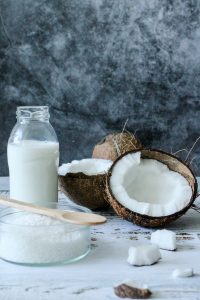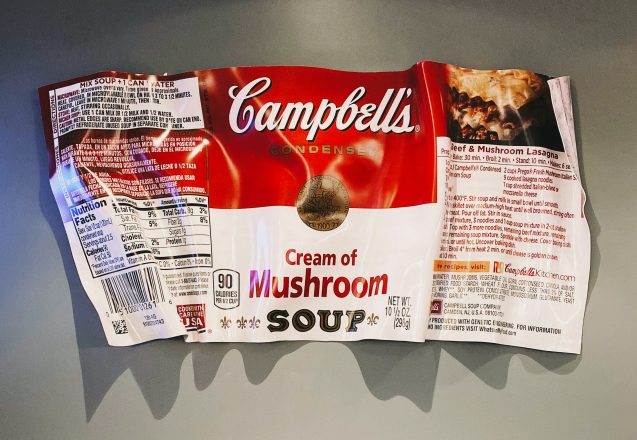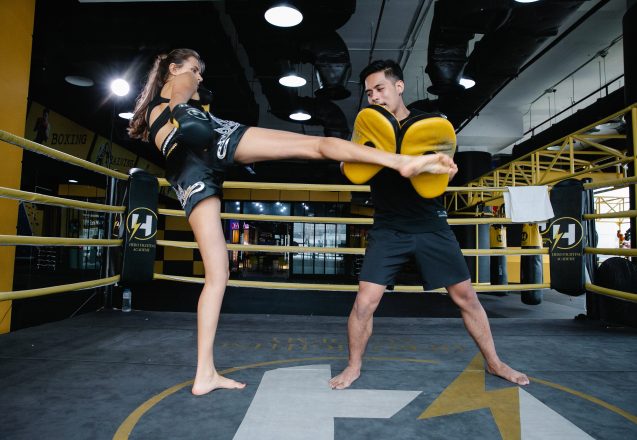How To Gain Muscle Mass
 If you’re working out, you’re probably hoping to lose fat and gain muscle mass in addition to your ultimate goal. You have to make lifestyle changes to do it. It takes both exercise and a healthy diet to increase your muscle mass. You also need adequate sleep and adequate hydration. Focusing on natural techniques is the best way to do it. It ensures you aren’t consuming harmful additives that can affect your body later.
If you’re working out, you’re probably hoping to lose fat and gain muscle mass in addition to your ultimate goal. You have to make lifestyle changes to do it. It takes both exercise and a healthy diet to increase your muscle mass. You also need adequate sleep and adequate hydration. Focusing on natural techniques is the best way to do it. It ensures you aren’t consuming harmful additives that can affect your body later.
Start with the right nutrition.
Eat a healthy snack or meal before and after a workout. It should contain a healthy source of protein and healthy carbs. If it’s close to workout time, stick with the healthy snack, but if it’s a couple of hours before your workout, you should eat a healthy meal. Include food like salmon, dairy, lean beef, or poultry. Chicken breasts are a good choice. Before you workout, avoid fat. It takes longer to digest and can cause issues. A healthy snack before working out can improve your workout and start the process of recovery. After working out it replaces the glycogen and boosts recovery.
Maximize the benefits of your workout.
Our personal trainers can help you with the most beneficial muscle-building exercises. HIIT—high intensity interval training is one technique. HIIT isn’t a particular exercise but a way of doing any exercise. You alternate between peak intensity and recovery. To build muscles, you have to stress them. Lifting weights is one way. You’re working against the force of gravity. Resistance bands also provide that resistance, but on various planes. They aren’t as beneficial for building bulk, however.
You need a recovery period.
Don’t exercise the same muscle groups every day. When you do strength training, you make micro-tears in your muscles. It takes 48 to 72 hours for those tears to heal. If don’t give them a rest and allow recovery, it can tear down muscle tissue and diminish it. You also require adequate sleep. Your body heals when you sleep.
- Using heavy weights and fewer repetitions will build strength. Lighter weights and more repetitions build bulk. If you do bodyweight exercises, as you get fitter, they become easier to do. Either carry weights or increase repetitions.
- Compound exercises can provide more benefits. They work several muscle groups, tendons, and joints at once. The larger muscles provide the most growth.
- Don’t skip fat in your diet. It’s necessary for producing hormones that help build muscle. Foods containing healthy fat include salmon, nuts, and avocados.
- Staying hydrated before, after, and during your workout is vital. If you’re slightly dehydrated, it can cause you to be tired. That can affect your workout. Drink an 8 oz. bottle of water 30 minutes before exercising and sip it throughout the workout.
For more information, contact us today at LIV Fitness



 You can find coconut milk in almost any grocery in Livermore, CA. It’s as popular as coconut water. Both come from coconuts, except coconut water is the unprocessed liquid in the middle of immature coconuts, and coconut milk is a processed product. Are both good for you? Does the processing make a difference? Coconut water is the liquid in the center of immature coconut that eventually hardens into the meat of the coconut. Coconut milk is made from the shredded meat of a mature coconut. It’s boiled or blended and strained. The amount of water added and the time spent cooking determines the consistency.
You can find coconut milk in almost any grocery in Livermore, CA. It’s as popular as coconut water. Both come from coconuts, except coconut water is the unprocessed liquid in the middle of immature coconuts, and coconut milk is a processed product. Are both good for you? Does the processing make a difference? Coconut water is the liquid in the center of immature coconut that eventually hardens into the meat of the coconut. Coconut milk is made from the shredded meat of a mature coconut. It’s boiled or blended and strained. The amount of water added and the time spent cooking determines the consistency.
 If you’re starting to run or jog, you might think those old sneakers in your closet are adequate. You might be wrong. Having good workout shoes can make a difference when you exercise. They’re the grounding force that stabilizes your entire body. If you don’t have good shoes for your daily run in Livermore, CA, you could be doing damage to your feet. They protect you from foot injuries and help you maintain the proper alignment.
If you’re starting to run or jog, you might think those old sneakers in your closet are adequate. You might be wrong. Having good workout shoes can make a difference when you exercise. They’re the grounding force that stabilizes your entire body. If you don’t have good shoes for your daily run in Livermore, CA, you could be doing damage to your feet. They protect you from foot injuries and help you maintain the proper alignment.
 You’ll hear a lot of claims when you listen to commercials or look at the front of the food package, but the real truth comes from reading the part of food labels where the nutritional information is. Knowing serving size and calories per serving can make a huge difference if you’re trying to lose weight. Checking the food label can tell you how much sugar was added to the product. It informs you on the amount of sodium, fat, total carbohydrates, and cholesterol to guide you to make the healthiest choices.
You’ll hear a lot of claims when you listen to commercials or look at the front of the food package, but the real truth comes from reading the part of food labels where the nutritional information is. Knowing serving size and calories per serving can make a huge difference if you’re trying to lose weight. Checking the food label can tell you how much sugar was added to the product. It informs you on the amount of sodium, fat, total carbohydrates, and cholesterol to guide you to make the healthiest choices.
 Your attitude can determine so much. If you have a negative attitude and think everyone is against you, you’ll interpret everything that way and find reasons to reinforce your belief. If you don’t think you can do something, you’ll give up before you master it. The same is true for fitness. Whether you hate exercise or just think you’ll never lose weight or get fit, that attitude can spell disaster. Luckily, you can change your attitude toward fitness and turn failure into success.
Your attitude can determine so much. If you have a negative attitude and think everyone is against you, you’ll interpret everything that way and find reasons to reinforce your belief. If you don’t think you can do something, you’ll give up before you master it. The same is true for fitness. Whether you hate exercise or just think you’ll never lose weight or get fit, that attitude can spell disaster. Luckily, you can change your attitude toward fitness and turn failure into success.
 If you want a flat stomach and that lean, svelte appearance, Pilates can help. It’s a good way to build core strength that supplements traditional workout techniques used in the gym. It involves low impact exercises that balance muscles and improve the neuromuscular pattern. You’ll gain flexibility, strength, and functional fitness. You’ll also reduce pain. As Pilates builds core strength, it also builds grace and agility.
If you want a flat stomach and that lean, svelte appearance, Pilates can help. It’s a good way to build core strength that supplements traditional workout techniques used in the gym. It involves low impact exercises that balance muscles and improve the neuromuscular pattern. You’ll gain flexibility, strength, and functional fitness. You’ll also reduce pain. As Pilates builds core strength, it also builds grace and agility.
 Mindfulness is a practice often used in Livermore, CA, and throughout the world. It is often associated with yoga and Eastern religions but has become part of the fitness community in recent years. Mindfulness is the practice of being present in the moment and the body-mind connection. If that sounds like doublespeak, explaining it as an example is better. When you’re working out, you focus on each move and how every muscle feels, using all your senses. Your mind is on the present movements. You’re not thinking of the problems you face at work or what to make for supper.
Mindfulness is a practice often used in Livermore, CA, and throughout the world. It is often associated with yoga and Eastern religions but has become part of the fitness community in recent years. Mindfulness is the practice of being present in the moment and the body-mind connection. If that sounds like doublespeak, explaining it as an example is better. When you’re working out, you focus on each move and how every muscle feels, using all your senses. Your mind is on the present movements. You’re not thinking of the problems you face at work or what to make for supper.
 If you’re like most people who exercise regularly, your activity doesn’t end when you leave the gym. Most people live an active lifestyle, whether it’s dancing on the weekend or playing sports like softball or basketball. One interesting active interest is kickboxing. While you get plenty of cardio when you play basketball, with kickboxing you get a full-body workout. Unlike softball, where you’re not moving constantly, kickboxing keeps you constantly active. It resembles a HIIT—high intensity interval training—workout.
If you’re like most people who exercise regularly, your activity doesn’t end when you leave the gym. Most people live an active lifestyle, whether it’s dancing on the weekend or playing sports like softball or basketball. One interesting active interest is kickboxing. While you get plenty of cardio when you play basketball, with kickboxing you get a full-body workout. Unlike softball, where you’re not moving constantly, kickboxing keeps you constantly active. It resembles a HIIT—high intensity interval training—workout.
 What’s your best workout time? For some people, it’s at lunch. Others like exercising after work. Many people find morning suits them best and have good reasons for that choice. There is no one right time to workout. Everyone is different, so what’s best for one is not the best for another. Your schedule, circadian rhythm, and obligations
What’s your best workout time? For some people, it’s at lunch. Others like exercising after work. Many people find morning suits them best and have good reasons for that choice. There is no one right time to workout. Everyone is different, so what’s best for one is not the best for another. Your schedule, circadian rhythm, and obligations
 One of the biggest problems overweight people face is a lack of nutrition knowledge. It often starts early in life and starts bad habits that are difficult to break. At LIV Fitness in Livermore, CA, we help break those bad habits with nutritional education so you can teach your kids healthy habits as you develop them yourselves. Here are a few ways to boost your child’s knowledge that will be valuable throughout life.
One of the biggest problems overweight people face is a lack of nutrition knowledge. It often starts early in life and starts bad habits that are difficult to break. At LIV Fitness in Livermore, CA, we help break those bad habits with nutritional education so you can teach your kids healthy habits as you develop them yourselves. Here are a few ways to boost your child’s knowledge that will be valuable throughout life.